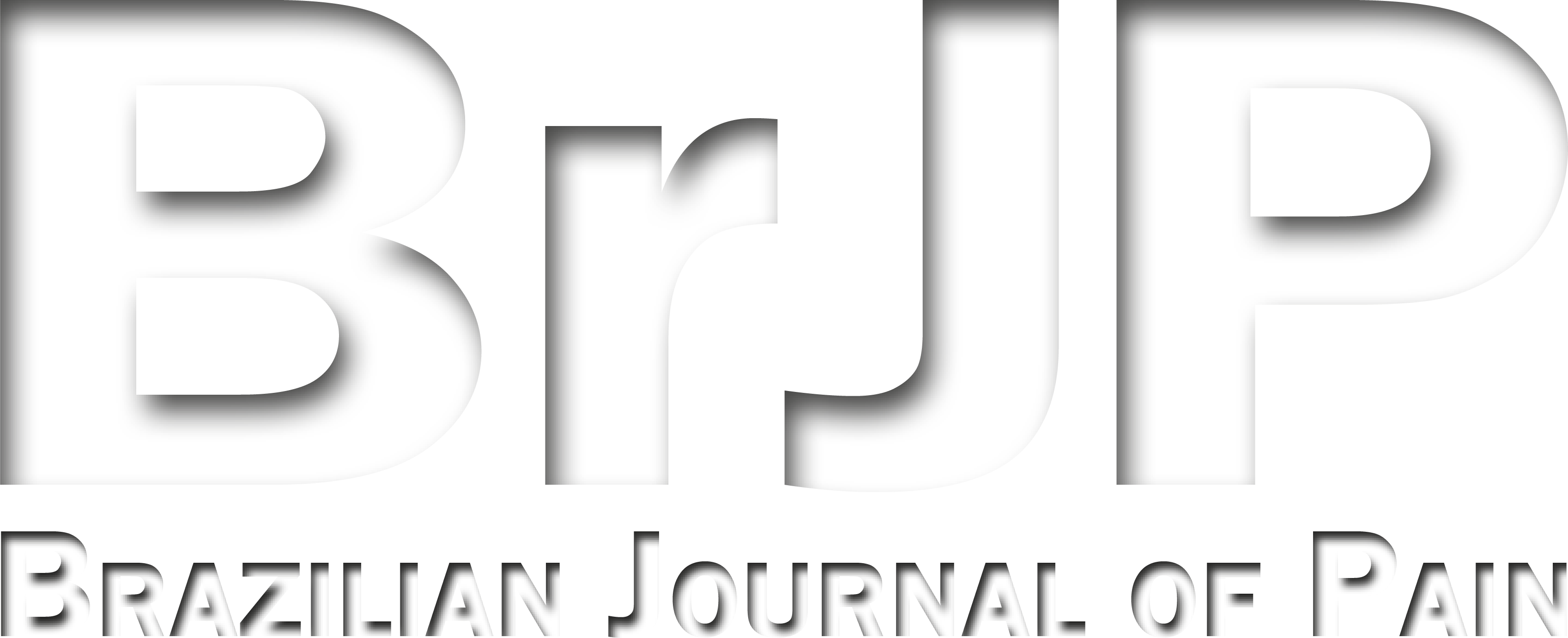Relationship between symptoms and imagenological signs of degenerative temporomandibular joint disorders using the Research Diagnostic Criteria for Temporomandibular Disorders and cone-beam computed tomography
Relação entre sintomas e sinais imagenológicos das disfunções degenerativas da articulação temporomandibular com o Research Diagnostic Criteria for Temporomandibular Disorders e a tomografia computadorizada de feixe cônico
Bruno Moreira da-Silva; Rafael de Almeida Spinelli Pinto; Letícia Ladeira Bonato; Arnaud Alves Bezerra-Júnior; Eduardo Grossmann; Luciano Ambrósio Ferreira
Abstract
Keywords
Resumo
Palavras-chave
Referências
Yadav S, Palo L, Mahdian M, Upadhyay M, Tadinada A. Diagnostic accuracy of 2 cone-beam computed tomography protocols for detecting arthritic changes in temporomandibular joints. Am J Orthod Dentofacial Orthop. 2015;147(3):339-44.
de Souza RF, Lovato da Silva CH, Nasser M, Fedorowicz Z, Al-Muharraqi MA. Interventions for the management of temporomandibular joint osteoarthritis. Cochrane Database Syst Rev. 2012;18(4):CD007261.
Finnson KW, Chi Y, Bou-Gharios G, Leask A, Philip A. TGF-?signaling in cartilage homeostasis and osteoarthritis. Front Biosci. 2012;4:251-68.
Kalladka M, Quek S, Heir G, Eliav E, Mupparapu M, Viswanath A. Temporomandibular joint osteoarthritis: diagnosis and long-term conservative management: a topic review. J Indian Prosthodont Soc. 2014;14(1):6-15.
Man C, Zhu S, Zhang B, Hu J. Protection of articular cartilage from degeneration by injection of transforming growth factor-beta in temporomandibular joint osteoarthritis. Oral Surg Oral Med Oral Pathol Oral Radiol Endod. 2009;108(3):335-40.
Tanaka E, Detamore MS, Mercuri LG. Degenerative disorders of the temporomandibular joint: etiology, diagnosis, and treatment. J Dent Res. 2008;87(4):296-307.
Ok SM, Lee J, Kim YI, Lee JY, Kim KB, Jeong SH. Anterior condylar remodeling observed in stabilization splint therapy for temporomandibular joint osteoarthritis. Oral Surg Oral Med Oral Pathol Oral Radiol. 2014;118(3):363-70.
Xiao JL, Meng JH, Gan YH, Zhou CY, Ma XC. Association of GDF5, SMAD3 and RUNX2 polymorphisms with temporomandibular joint osteoarthritis in female Han Chinese. J Oral Rehabil. 2015;42(7):529-36.
Vos LM, Kuijer R, Huddleston Slater JJ, Stegenga B. Alteration of cartilage degeneration and inflammation markers in temporomandibular joint osteoarthritis occurs proportionally. J Oral Maxillofac Surg. 2013;71(10):1659-64.
Dworkin SF, LeResche L. Research diagnostic criteria for temporomandibular disorders: review, criteria, examinations and specifications, critique. J Craniomand Disord. 1992;6(4):301-55.
Schiffman E, Ohrbach R, Truelove E, Look J, Anderson G, Goulet JP. Diagnostic criteria for temporomandibular disorders (DC/TMD) for clinical and research applications: recommendations of the International RDC/TMD Consortium Network and Orofacial Pain Special Interest Group. J Oral Facial Pain Headache. 2014;28(1):6-27.
Lascala CA, Panella J, Marques MM. Analysis of the accuracy of linear measurement obtained by cone beam computed tomography (CBCT-NewTom). Dentomaxillofac Radiol. 2004;33(5):291-4.
Martinez-Blanco M, Bagán JV, Fons A, Poveda Roda R. Osteoarthrosis of the temporomandibular joint: A clinical and radiological study of 16 patients. Med Oral. 2004;9(2):110-5.
Milam SB. Pathophysiology and epidemiology of TMJ. J Musculoskelet Neuronal Interact. 2003;3(4):382-90.
Ahmad M, Hollender L, Anderson Q, Kartha K, Ohrbach R, Truelove EL. Research diagnostic criteria for temporomandibular disorders (RDC/TMD): development of image analysis criteria and examiner reliability for image analysis. Oral Surg Oral Med Oral Pathol Oral Radiol Endod. 2009;107(6):844-60.
Pereira Júnior FJ, Favilla EE, Dworkin S, Kimberly H. Critérios de diagnóstico para pesquisa das disfunções temporomandibulares (RDC/TMD): Tradução oficial para a língua portuguesa. J Bras Clin Odontol Integr. 2004;8(47):384-95.
Alexiou K, Stamatakis H, Tsiklakis K. Evaluation of the severity of temporomandibular joint osteoarthritic changes related to age using cone beam computed tomography. Dentomaxillofac Radiol. 2014;38(3):141-7.
Wiese M, Wenzel A, Hintze H, Petersson A, Knutsson K, Bakke M. Osseous changes and condyle position in TMJ tomograms: impact of RDC/TMD clinical diagnoses on agreement between expected and actual findings. Oral Surg Oral Med Oral Pathol Oral Radiol Endod. 2008;106(1):52-63.
Grossmann E, Remedi MP, Ferreira LA, Carvalho AC. Magnetic resonance image evaluation of temporomandibular joint osteophytes: influence of clinical factors and artrogenics changes. J Craniofac Surg. 2016;27(2):334-8.
Wiese M, Svensson P, Bakke M, List T, Hintze H, Petersson A. Association between temporomandibular joint symptoms, signs, and clinical diagnosis using the RDC/TMD and radiographic findings in temporomandibular joint tomograms. J Orofac Pain. 2008;22(3):239-51.
Su N, Liu Y, Yang X, Luo Z, Shi Z. Correlation between bony changes measured with cone beam computed tomography and clinical dysfunction index in patients with temporomandibular joint osteoarthritis. J Craniomaxillofac Surg. 2014;42(7):1402-7.
Dagar SR, Turakiya V, Pakhan AJ, Jaggi N, Kalra A, Vaidya V. Modified stethoscope for auscultation of temporomandibular joint sounds. J Int Oral Health. 2014;6(2):40-4.
Hussain AM, Packota G, Major PW, Flores-Mir C. Role of different imaging modalities in assessment of temporomandibular joint erosions and osteophytes: a systematic review. Dentomaxillofac Radiol. 2008;37(1):63-71.
Ferreira LA, Grossmann E, Januzzi E, de Paula MVQ, Carvalho ACP. Diagnosis of temporomandibular joint disorders: indication of imaging exams. Braz J Otorhinolaryngol. 2016;82(3):341-52.
Hilgenberg-Sydney PB, Bonotto DV, Stechman-Neto J, Zwir LF, Pachêco-Pereira C, Canto GL. Diagnostic validity of CT to assess degenerative temporomandibular joint disease: a systematic review. Dentomaxillofacial Radiol. 2018;47(5):20170389.
Bakke M, Petersson A, Wiesel M, Svanholt P, Sonnesen L. Bony deviations revealed by cone beam computed tomography of the temporomandibular joint in subjects without ongoing pain. J Oral Facial Pain Headache. 2014;28(4):331-7.
Pantoja LLQ, de Toledo IP, Pupo YM, Porporatti AL, De Luca Canto G, Zwir LF. Prevalence of degenerative joint disease of the temporomandibular joint: a systematic review. Clin Oral Investig. 2019;23(5):2475-88.
Submetido em:
20/12/2019
Aceito em:
17/03/2020


